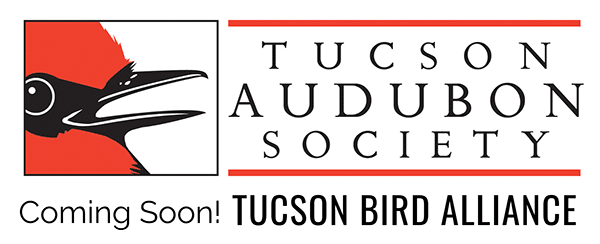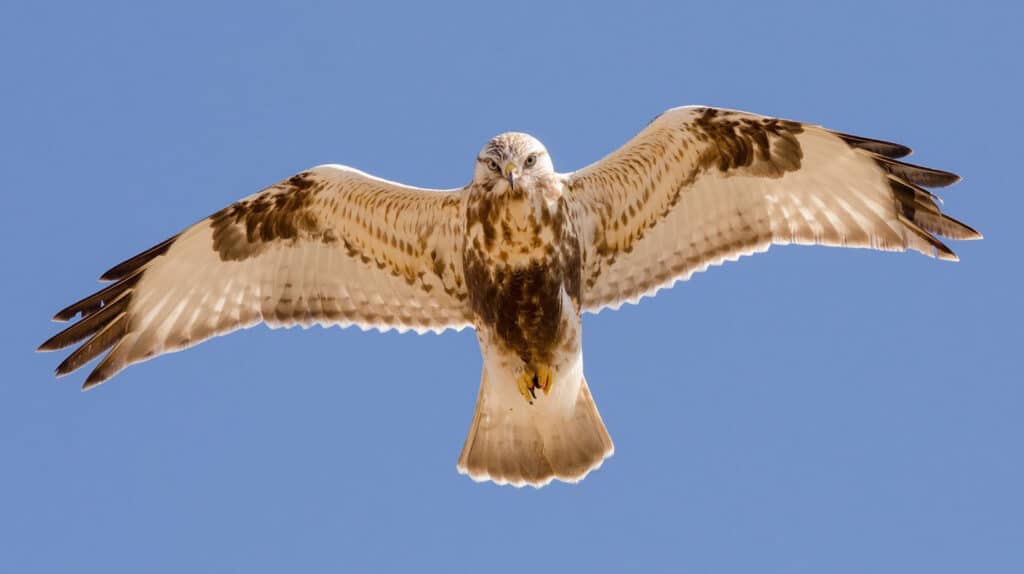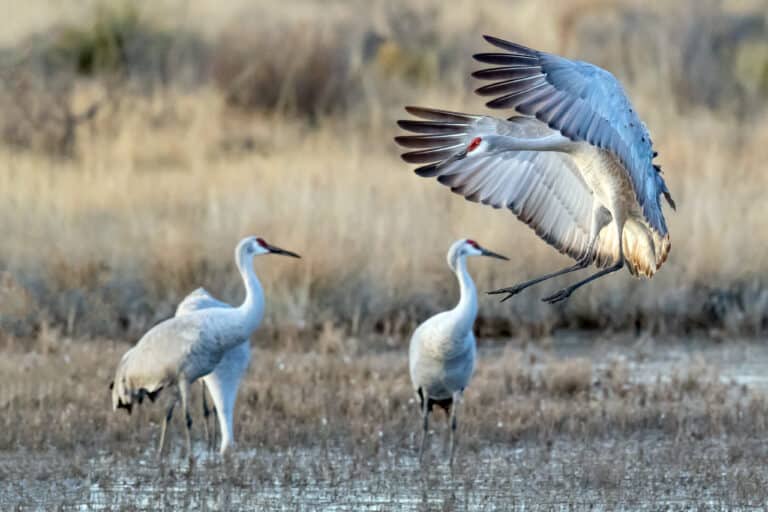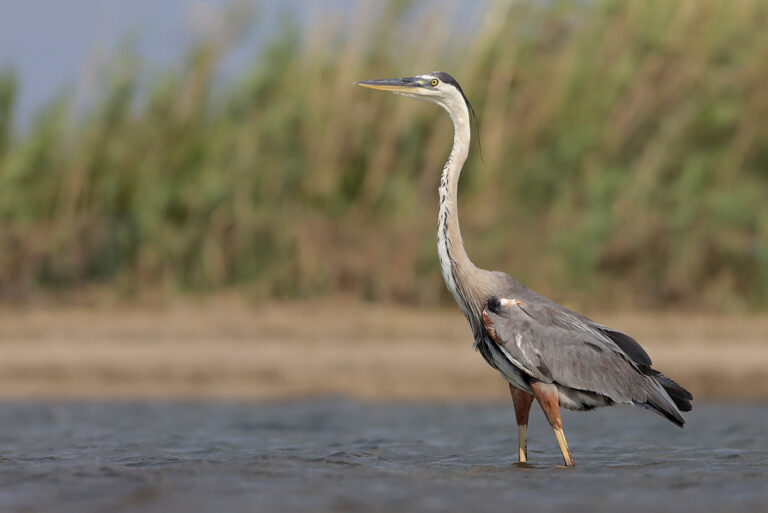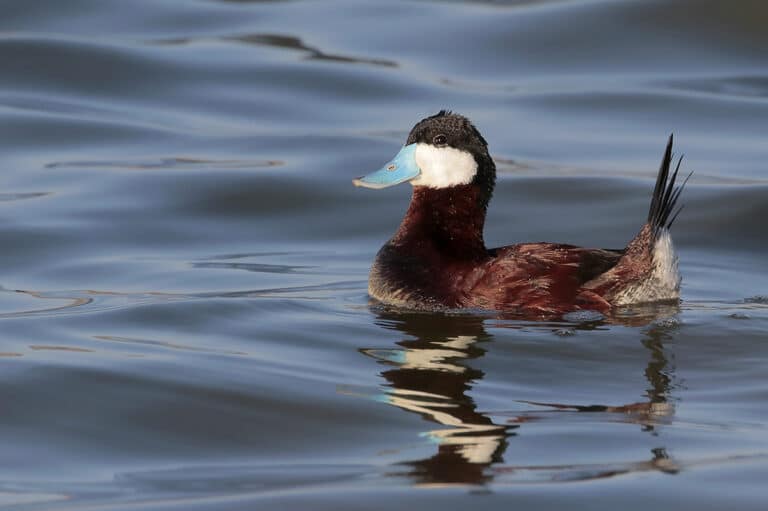It doesn’t happen every year, but it’s pretty exciting when Rough-legged Hawks come to Southeast Arizona. If you spot one, you can be sure it’s quite a long way from its breeding grounds in the arctic tundra. This is the northernmost breeding buteo hawk and its cold weather adaptation of feathered legs inspired its “rough-legged” name. In North America, the Golden Eagle and Ferruginous Hawk are the only other members of this leg warmer club. This arctic bird is beautiful too—the light morph is overall pale-colored with a very thick and dark belly band and black carpal (think wrist) patches on the wings. The Rough-legged Hawk is a cliff nester but occasionally utilizes trees on the edges of boreal forest and human-made structures. Since they favor open land, these hawks are skilled at hunting on the wing and will often hover in place similar to kestrels and kites as they look for lemmings, voles, and ptarmigans. The hawks are closely tied to the populations of these favored prey items—especially the small mammals—and may follow them, causing “invasions” to new areas. Interestingly, the hawks may be able to see vole urine spots in the ultraviolet spectrum similar to kestrels. This could aid rough-leggeds in finding prey, and when all else fails, they are known to steal food from Northern Harriers.
Will this be a winter when Rough-legged Hawks invade the region in search of prey? For sure there will be many eyes looking in great locations such as San Rafael Valley, Las Cienegas NCA, Sulphur Springs Valley, and the Santa Cruz Flats. When exploring these open areas, scan the skies for kiting birds and check low fence posts, tall poles, and wispy treetops.
Image by Peter Brannon
